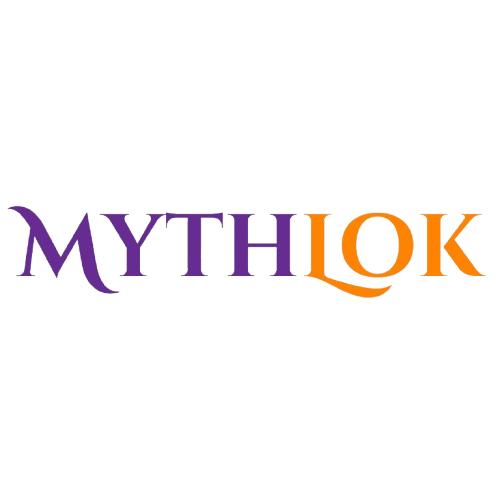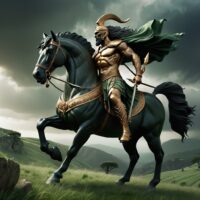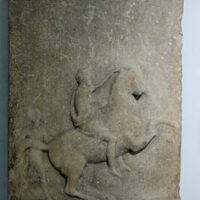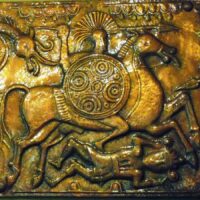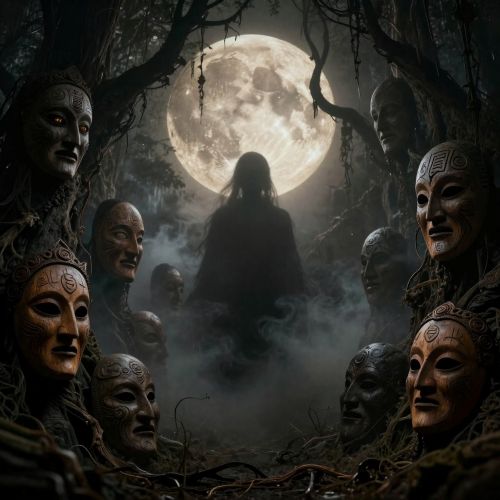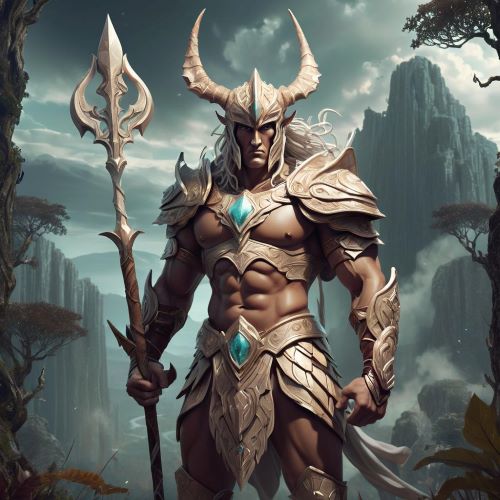Medaurus : God of War
Listen
At a glance
| Description | |
|---|---|
| Origin | Illyrian Mythology |
| Classification | Gods |
| Family Members | N/A |
| Region | Albania, Montenegro, Croatia, Bosnia and Herzegovina, and Kosovo |
| Associated With | War |
Medaurus
Introduction
Medaurus, a prominent Illyrian deity, was primarily venerated as the protector of Risinium (modern-day Risan, Montenegro). His worship extended beyond the Balkans, as evidenced by inscriptions found in North Africa and southern Italy. The verse dedication by a Roman consul from Rhizon further attests to his significance.
Archaeological discoveries in Risinium suggest that a grand statue of Medaurus once stood on the city’s acropolis, emphasizing his role as both guardian and symbol of Illyrian identity. His presence was particularly important to Illyrian soldiers, especially those stationed along the Roman frontiers, where he may have served a similar function to Jupiter Depulsor in warding off enemies.
While often overlooked compared to the myths of Greece and Rome, Illyrian mythology features deities central to the beliefs of its people. Medaurus, a god of war and protection, embodied their strength and resilience. He was revered for guiding warriors to victory and shielding communities, standing as a powerful figure of courage and triumph.
Physical Traits
Medaurus is typically portrayed as a mounted warrior wielding a javelin, a reflection of the Illyrians’ strong equestrian and martial traditions. His statue in Risinium, with a base estimated at 15×20 meters, suggests a grand and imposing presence. Inscriptions from Lambaesis describe him dynamically—his left hand urging his horse upward while his right hand hurls a spear—highlighting his combat-ready stance.
This imagery reinforces Medaurus’ role as a warrior and protector. Clad in armor and armed for battle, he embodies resilience and strength. The horse, a symbol of power and loyalty in many ancient cultures, further underscores his readiness for war. Whether depicted in reliefs or statues, his confident and determined expression cements his status as both a feared and revered deity.
Family
The lineage of Medaurus remains largely unknown due to the scarcity of documented Illyrian mythology. Unlike the well-defined genealogies of Greek and Roman gods, Illyrian deities often existed as distinct tribal figures, with their worship varying across different regions. Medaurus, primarily revered as a protector, seems to stand apart as an independent force rather than being part of a divine family.
Rather than a literal lineage, Medaurus’ connection to the Illyrian people may have been more symbolic. He could have been regarded as a guardian spirit of warriors and clans, embodying the collective strength and resilience of those who sought his protection. His role as a war deity likely reinforced his status as a guiding force rather than a figure defined by familial ties.
Other names
Medaurus is the most widely recognized name for this Illyrian deity, though variations may have existed among different tribes. Unlike many mythological figures with multiple epithets, his identity appears largely consistent, reflecting the straightforward nature of Illyrian religious traditions.
While Roman influence often led to the assimilation of Illyrian gods into the Roman pantheon, there is no definitive evidence linking Medaurus to a specific Roman deity. Some scholars speculate that local war gods, such as Armatus, may share similarities, but direct associations remain unclear. Given the diverse tribal structure of Illyria, regional differences in how Medaurus was named or perceived likely existed.
Powers and Abilities
Medaurus was revered as a powerful war deity, embodying both physical strength and strategic prowess. Illyrian warriors invoked him for courage before battle, believing his presence granted them resilience and unity in combat. His depiction as a mounted warrior with a javelin reinforced his role as a fierce battlefield leader, guiding his followers to victory. Unlike purely destructive war gods, Medaurus was also seen as a stabilizing force, ensuring that battles were fought with purpose and skill rather than brute force alone.
Beyond warfare, Medaurus played a crucial role as a protector of cities and communities, particularly Risinium. His influence extended to shielding his people from harm, whether through divine intervention or by inspiring leaders to make sound defensive decisions. Many believed that his presence in shrines or inscriptions provided spiritual fortification, ensuring the safety and prosperity of those under his watch. This protective aspect made him not just a god of warriors but a guardian of Illyrian identity and survival.
Medaurus’ strong association with horses further emphasized his martial nature, as cavalry played a vital role in Illyrian warfare. His imagery as a mounted warrior suggested a divine gift of speed, endurance, and tactical mobility—crucial advantages in battle. Illyrians may have sought his favor to enhance their cavalry skills, ensuring swift and decisive victories. Whether as a war god, protector, or equestrian patron, Medaurus remained a symbol of strength and resilience, embodying the warrior spirit of the Illyrian people.
Modern Day Influence
Though Medaurus is not widely represented in modern popular culture, his legacy is upheld through historical research, archaeological findings, and academic discussions on Illyrian mythology. His name occasionally appears in video games and literature that incorporate Illyrian themes, albeit in a limited capacity. The preservation of Medaurus in scholarly works ensures that his role as a warrior deity remains an important subject in the study of ancient Balkan cultures.
Despite the Roman conquest and the eventual assimilation of Illyrian traditions, Medaurus’s influence endures through archaeological discoveries. Artifacts such as statues and reliefs depicting him provide valuable insight into Illyrian religious practices. These findings serve as cultural touchstones, offering glimpses into how ancient communities revered him as both a protector and a martial figure.
The echoes of Medaurus can also be found in Balkan folklore, where remnants of Illyrian mythology blend with later Slavic and Roman influences. His image has been embraced in regional heritage discussions, symbolizing the resilience of the Illyrian people. Occasionally, modern artistic and literary works reinterpret Medaurus, keeping his myth alive while integrating him into contemporary narratives of identity and historical pride.
Related Images
Source
Ceka, Neritan. The Illyrians to the Albanians. Migjeni Publishing House, 2005.
Harding, Anthony. European Societies in the Bronze Age. Cambridge University Press, 2000.
Wilkes, John. The Illyrians. Blackwell Publishers, 1992.
Malkoč, Tomislav. “Illyrian Deities and Their Roles in Ancient Society.” Journal of Balkan Mythology, vol. 12, no. 3, 2016.
“Archaeological Discoveries in the Balkans.” Illyrian Heritage Foundation, .
Repaj, Astrit. “Medaurus: The Warrior Deity of Illyria.” Historical Perspectives on Mythology, vol. 8, no. 4, 2019.
Frequently Asked Questions
What is lorem Ipsum?
I am text block. Click edit button to change this text. Lorem ipsum dolor sit amet, consectetur adipiscing elit. Ut elit tellus, luctus nec ullamcorper mattis, pulvinar dapibus leo.
What is lorem Ipsum?
I am text block. Click edit button to change this text. Lorem ipsum dolor sit amet, consectetur adipiscing elit. Ut elit tellus, luctus nec ullamcorper mattis, pulvinar dapibus leo.
What is lorem Ipsum?
I am text block. Click edit button to change this text. Lorem ipsum dolor sit amet, consectetur adipiscing elit. Ut elit tellus, luctus nec ullamcorper mattis, pulvinar dapibus leo.
What is lorem Ipsum?
I am text block. Click edit button to change this text. Lorem ipsum dolor sit amet, consectetur adipiscing elit. Ut elit tellus, luctus nec ullamcorper mattis, pulvinar dapibus leo.
What is lorem Ipsum?
I am text block. Click edit button to change this text. Lorem ipsum dolor sit amet, consectetur adipiscing elit. Ut elit tellus, luctus nec ullamcorper mattis, pulvinar dapibus leo.

